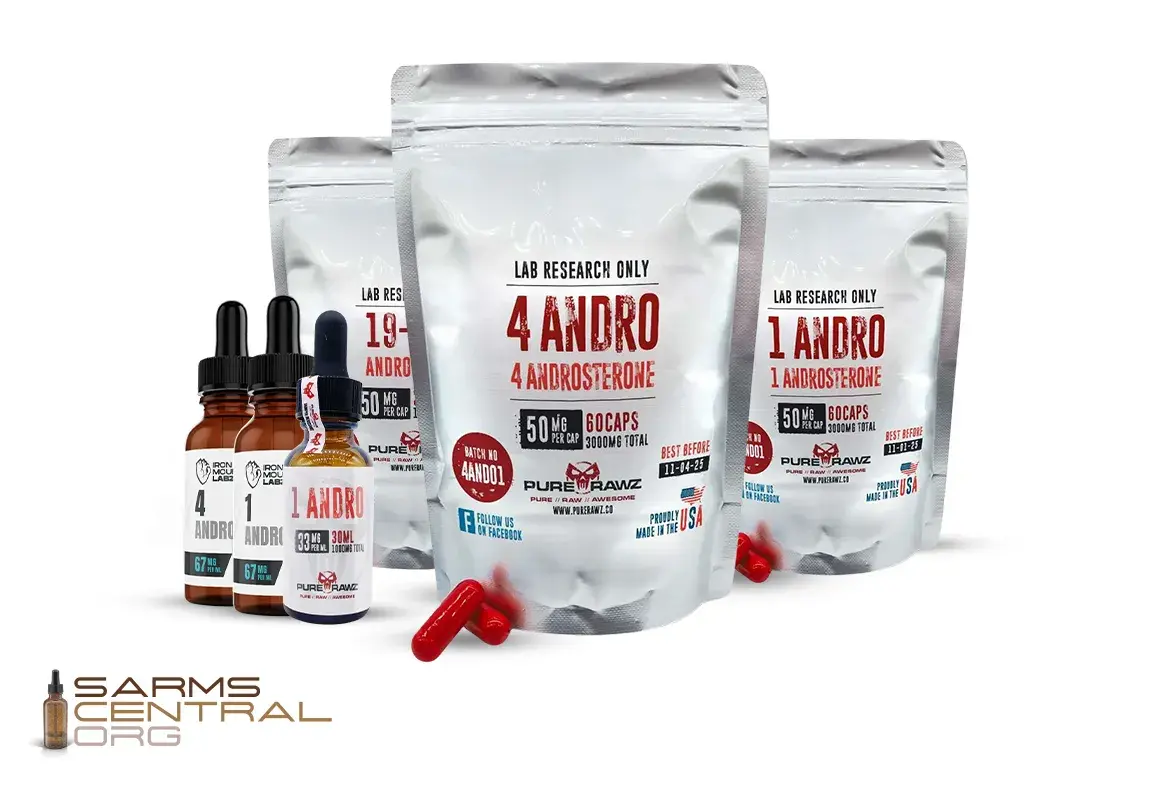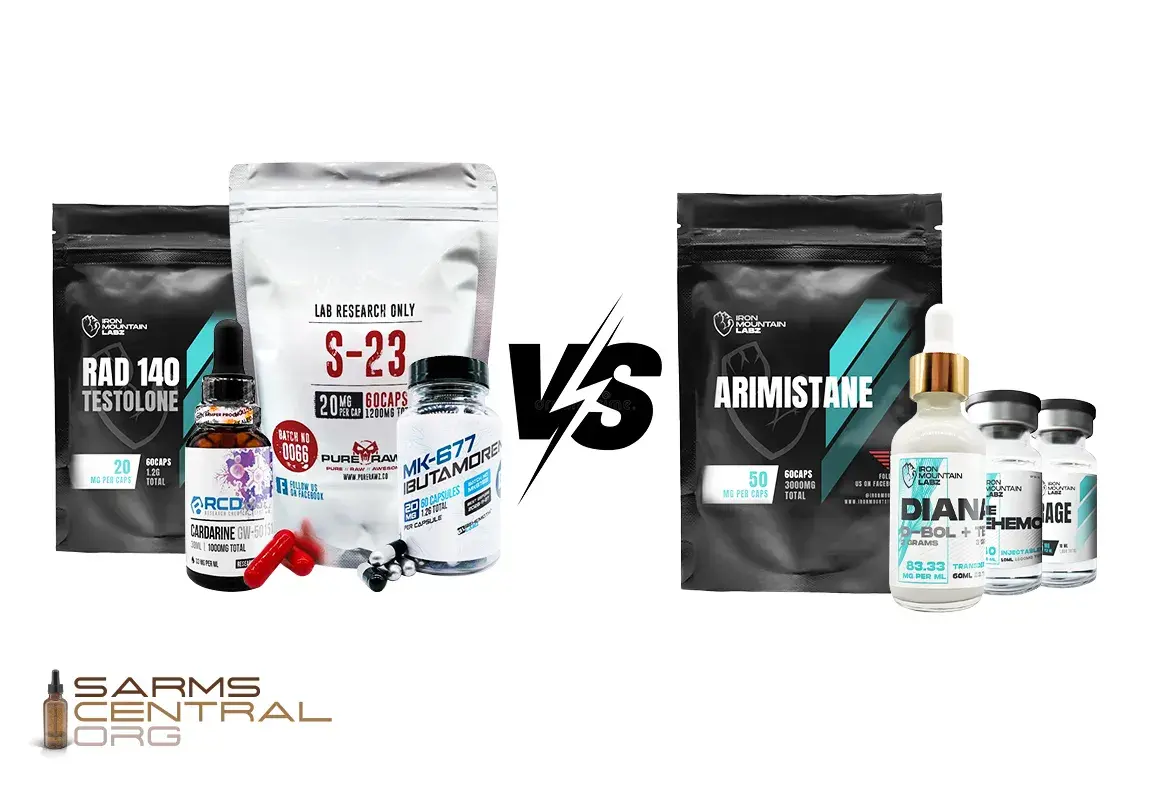We, at Sarmscentral, have talked about countless solvents and peptides, which can enable receptors and hormones in our body to accelerate and perform amazing things.
From describing lyophilized peptide and protein drugs to explaining Sarms with the capabilities of enhancing hormones such as HGH (Human growth hormone), the one thing missing so far is the core component or ingredient necessary to make that all happen.
That core component is the solvent in which these peptides and drugs flourish and maintain their magic along with their shelf lives.
In this article, we will discuss two different types of solvents (both pharmaceutical-grade solvents) that are commonly used in research and medical contexts to dissolve substances for injection. We will discuss benefits, side effects, and comparisons between Bacteriostatic Water and Sterile Water.
Bacteriostatic vs. Sterile Water
Bacteriostatic Water
Bacterial water more commonly referred to as Bacteriostatic Water (in scientific terms) is essentially sterile water that contains a minute amount of benzyl alcohol. This percentage of benzyl alcohol (0.9% to be precise) helps in diluting and dissolving various medications as benzyl alcohol inhibits the growth of most potentially contaminating bacteria. {R}
Bacteriostatic Water can be used multiple times in intravenous, intramuscular, or subcutaneous injections.
Sterile water
While bacteriostatic water contains microorganisms, sterile water is free from living organisms, making it devoid of bacteria or other pathogens. Sterile water is commonly used in medical procedures and pharmaceutical applications to minimize the risk of contamination.
Among the two, this is an approved sterile solvent and therefore most commonly used in injections. Sterile water uses an aseptic technique with no preservative agents and therefore unlike bacteriostatic water, cannot be safely stored after being opened once.
Both bacteriostatic and sterile water are not used for straight injections and have to be diluted with a drug or solvent since that can destroy red blood cells.
Benefits of Bacteriostatic and Sterile Water:
Bacteriostatic Water
The primary benefits of bacteriostatic water lie in its ability to inhibit the growth of bacteria, which is crucial in certain medical and laboratory applications. Here are some specific benefits:
Reconstitution of Medications
Bacteriostatic water is commonly used to reconstitute medications, particularly those that come in powdered form. By mixing the medication with bacteriostatic water, the risk of bacterial contamination during storage and administration is significantly reduced {R}.
This is essential for maintaining the integrity and safety of the medication. Bacteriostatic water is considered the preferred solvent for HGH (essential for growth hormone treatment) for efficient dissolution of HGH powder, reduced infection risk, and the provision of multi-dose vial solutions. {R}
Storage and shelf life extension
The addition of antimicrobial agents, such as benzyl alcohol, to bacteriostatic water, allows for extended storage of reconstituted medications. The antimicrobial agent helps prevent the growth of bacteria within the solution for a limited period after reconstitution, typically up to 28 days. {R}
This feature is particularly important in healthcare settings where medications may need to be stored for some time before use.
Laboratory Applications
Bacteriostatic water is used in laboratory settings for various applications, including the preparation of cell culture media and solutions. The inhibition of bacterial growth is critical in these environments to ensure the accuracy and reliability of experimental results. {R}
Prevention of Contamination
In medical and laboratory contexts, the presence of bacteria in solutions can compromise experimental outcomes or the efficacy of medications. Bacteriostatic water provides a means of minimizing the risk of contamination, contributing to the overall safety and reliability of processes and procedures. {R}
Packaging
Bacteriostatic water is often available in single-use vials, which helps prevent cross-contamination between uses. This packaging is convenient and aligns with safety protocols in medical and laboratory settings. {R}
Sterile Water
Sterile water has various applications across different fields due to its purity and lack of contaminants. Here are some benefits of sterile water:
Pharmaceutical Formulations
Sterile water is used as a solvent for medications and is suitable for intramuscular, subcutaneous, and intravenous injections. Sterile water is often used for cleaning wounds, providing a clean environment for healing. {R}
Laboratory Applications
In laboratories, sterile water is used to dilute solutions without introducing contaminants that could interfere with experimental results. It is essential for the preparation of cell culture media to provide a sterile environment for cell growth and experiments. Sterile water is used in the preparation of buffers for various biological and chemical assays. {R}
Medical Equipment
Sterile water is used for cleaning and sterilizing medical instruments including sterile syringes to maintain aseptic conditions. {R}
Contact Lens Care
Sterile water is recommended for rinsing and cleaning contact lenses to prevent eye infections.
Topical Applications
Sterile water is used for irrigating and cleaning wounds or body cavities. In some medical procedures, sterile water may be used for inhalation therapies. {R}
Cosmetic and Personal Care Products
In the manufacturing of cosmetics and personal care items, sterile water may be used to dilute or dissolve ingredients. {R}
Cleanroom Environments
Sterile water is a critical component in the manufacturing of pharmaceuticals in clean room environments to ensure product quality. {R}
Food and Beverage Industry
Sterile water may be used in the food and beverage industry for dissolving and diluting ingredients in the production process. {R}
Emergency Situations
Sterile water is useful for cleaning wounds and providing emergency irrigation in situations where clean water is not readily available. {R}
Side Effects of Sterile vs Bacteriostatic Water
Bacteriostatic Water
Bacteriostatic water is treated with a bacteriostatic agent, commonly benzyl alcohol, to inhibit the growth of bacteria. Some potential side effects related to bacterial water are:
Allergic Reactions
Some individuals may be sensitive or allergic to benzyl alcohol or other components used as bacteriostatic agents. This can result in allergic reactions such as redness, itching, or swelling at the injection site. {R}
Systemic Reactions
In rare cases, systemic reactions such as fever or difficulty breathing may occur. Seek medical attention if you experience severe or persistent symptoms.
When using bacteriostatic water, it’s important to follow proper guidelines, and if there are concerns about allergic reactions, consult with a healthcare professional. {R}
Sterile Water
Sterile water itself, when used appropriately and in the intended manner, typically does not have side effects. Sterile water is purified and free from microorganisms, making it suitable for various medical, laboratory, and other applications.
However, in some cases, patients may experience pain or discomfort at the injection site with a sterile syringe, but this is typically associated with the medication itself rather than the sterile water. {R}
Though there are no major side effects, there is a drawback of Sterile water since it can lose its sterility if exposed to contaminants during storage or handling. Therefore, contaminated sterile water could potentially lead to infections if used in medical or clinical applications. {R}
Dosage – Bacteriostatic Water vs. Sterile Water
When we talk about Bacterial and sterile water, the dosage does not have any significance as both refer to the quality and characteristics of the water rather than a substance with a therapeutic dose.
It’s important to note that dosages and uses of water in medical applications are highly specific to the context and the medications or procedures involved. Dosages are typically associated with medications rather than the water itself.
The only difference between the two in terms of dosages is that sterile solvents use single-dose vials due to the absence of any preservative while bacteriostatic water solutions have the advantage of multi-dose vials due to the preservative agent present in them. {R}
Commonalities Between Sterile and Bacteriostatic Water
Both solvents share commonalities in their use within medical and laboratory contexts, primarily related to their sterile nature and applications requiring aseptic conditions. Some of the commonalities include sterility, injection, and medication reconstitution, cell culture work, prevention of contamination, and single usage of vials.
While these commonalities exist, it’s important to note that the key distinction lies in the composition of bacteriostatic water, which includes a bacteriostatic agent (such as benzyl alcohol) to inhibit bacterial growth over a limited period. Sterile water, on the other hand, is water that has been made free from microorganisms but does not necessarily contain additional agents to prevent bacterial growth after reconstitution.
Sterile vs. Bacteriostatic Water – Which is Better?
As far as research purposes are concerned, we would rate bacteriostatic water as the better of the two options as it is safer, more convenient, and more efficient in its mechanism.
The fact that it contains a natural preservative agent makes it contamination and infection-free while extending the shelf life of medication alongside it. Bacteriostatic water solutions provide multi-dose preparations, saving money and time.
Above being said, sterile water may still be the better option under some situations that prefer aseptic techniques. These include preparations for injection for patients who are allergic to benzyl alcohol.
Moreover, some medications cannot tolerate potential drug interactions and require sterile water rather than bacteriostatic water.
Where to Buy Bacteriostatic and Sterile Water Online?
PureRawz is the best place to buy sterile water and bacteriostatic water online. We offer extremely competitive pricing.
To be the best research chemicals supplier, we provide reference materials with every product we sell.
Each of our products is safely packaged and comes with an independent, third-party-issued Certificate of Analysis for identification, purity, and concentration.







